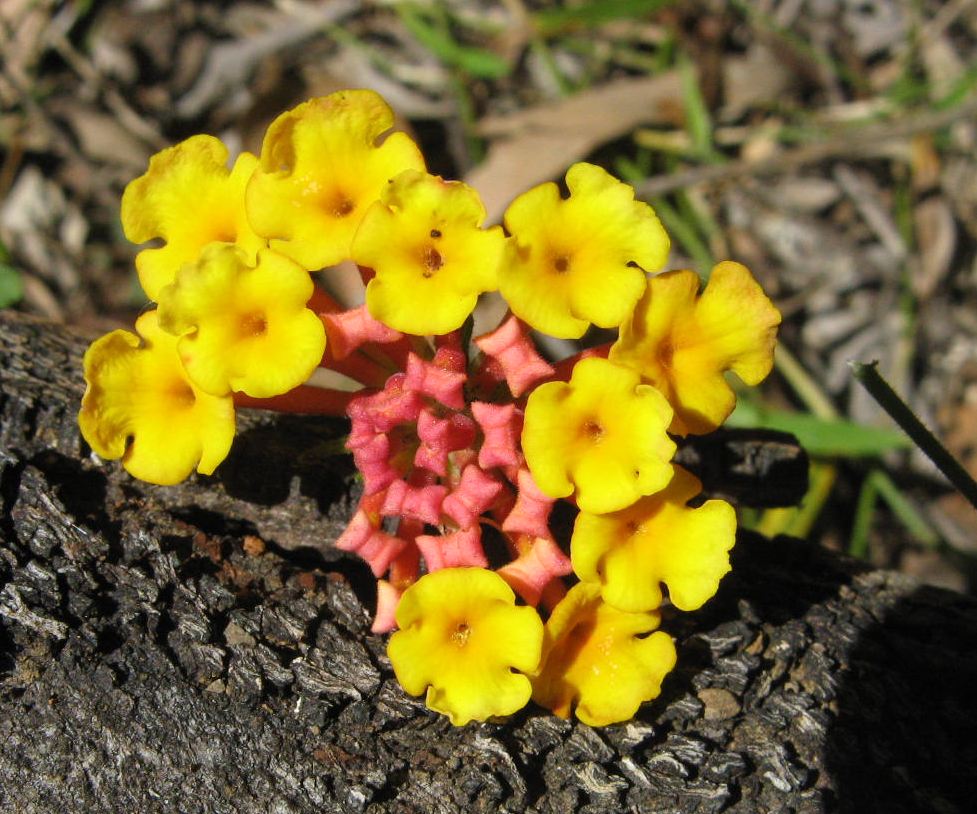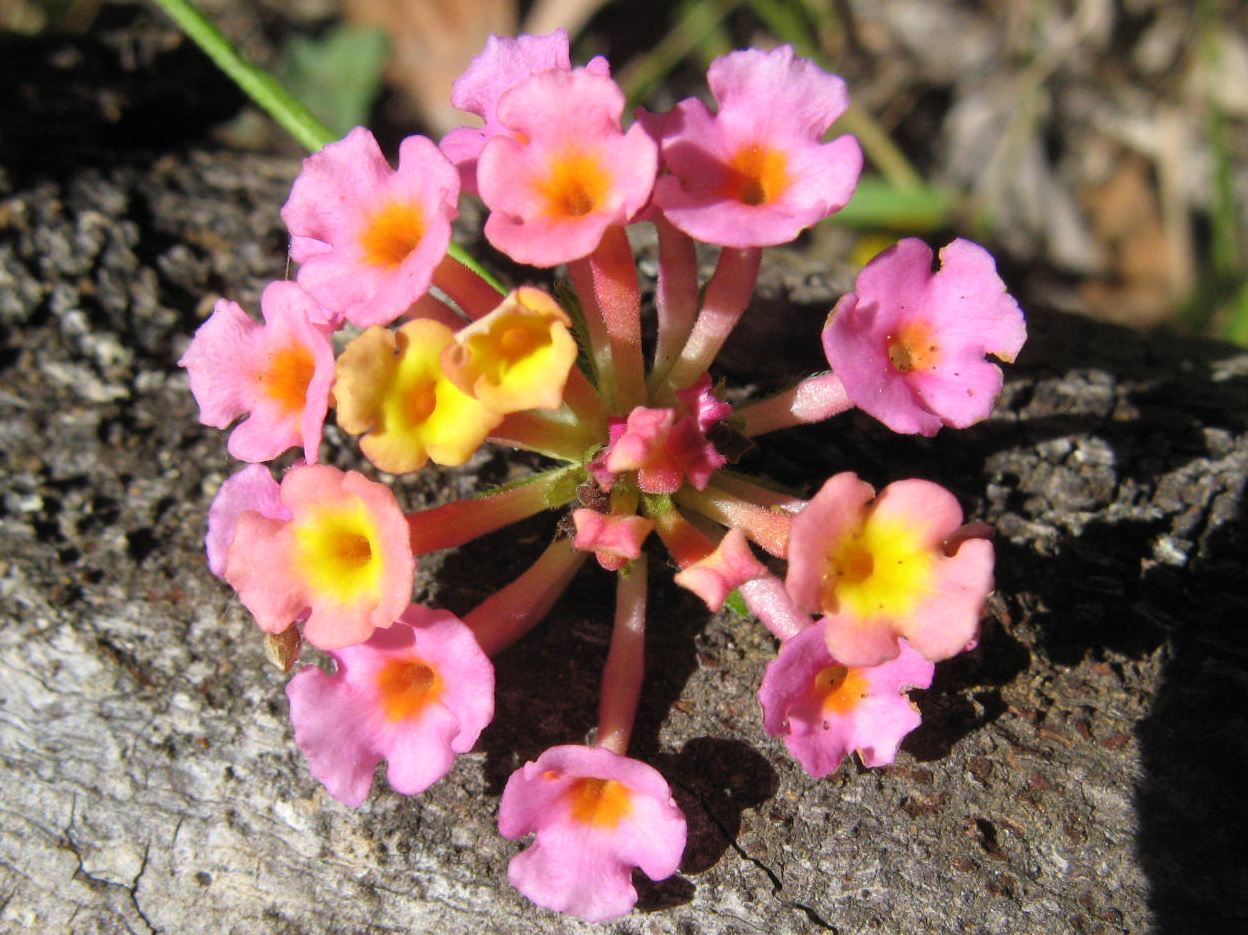
Pollination and Colour Effects
During a visit to Western Australia we stayed at the Western Flora Caravan Park which is north of Eneabba. A feature of this park is a not to be missed afternoon nature walk conducted by the owner. A subject discussed by him was the effect of flower colour on pollinators and the effect of pollination on flower colour. This was well illustrated using Geraldton wax.
During a recent walk around Enoggera Reservoir there was much Lantana camara in flower, which provided an excellent sample of the phenomena that were described at Western Flora.
| The pink buds in the centre have not yet opened. The yellow flowers have not been pollinated. |  |
|
 |
Yellow seems to be an attractive colour to many day flying insects. When the lantana flower opens, the yellow target draws the insects; the pink buds in the centre are not attractive. Soon after pollination the stigma darkens. Subsequently the flower’s centre darkens to orange and the petals become, to insects, an unattractive pink.
This mechanism is efficient for the plant in that pollinators go to fresh flowers. It probably helps the insects, who are deterred from going to fertilised flowers where nectar and pollen are not available.
The material below can be viewed on the web at: http://jxb.oxfordjournals.org/cgi/content/abstract/35/11/1656
H. Y. MOHAN RAM and GITA MATHUR Department of Botany, University of Delhi Delhi-110007, India
Lantana camara flowers undergo colour change subsequent to anthesis. In the colour variant selected for the present study, pink buds, yellow newly-opened flowers and ageing orange, scarlet and magenta flowers are found in the same inflorescence. The flower pigments were chemically analysed and identified as delphinidin monoglucoside and ß-carotene.
Thrips are regular pollinators of Lantana under Delhi conditions. Pollination was identified as the trigger for rapid anthocyanin synthesis. Even the presence of one pollen grain on the stigma of a yellow flower was sufficient to cause colour change. Injection of a suspension of pollen into flowers opened in vitro caused pigment changes. An extract of Lantana pollen was also able to simulate the effect of pollination, suggesting the involvement of a pollen factor. The post-pollination shift in petal colouration is caused by the masking of carotenoids by differential amounts of anthocyanin. As thrips are attracted to only yellow flowers, chromatic changes play a role in conserving pollinator energy.
Key words: Anthecology, Floral pigments, Lantana camara, Pollination
David Shaw 30/4/2009
